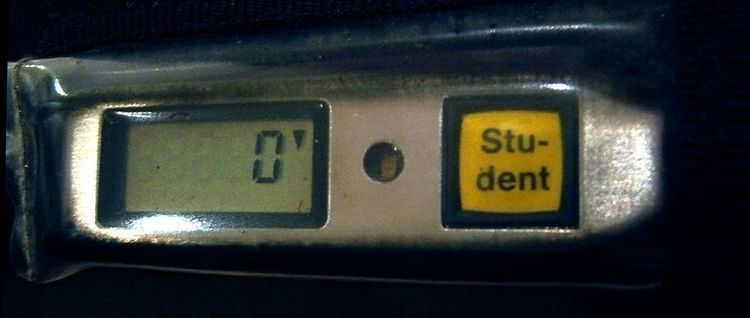 | ||
Automatic activation device (AAD) in skydiving terminology refers to an electronic-pyrotechnic or mechanical device that automatically opens the main or reserve parachute container at a preset altitude or after a preset time.
Contents
AADs are typically used to open the reserve parachute container at a preset altitude if the descent rate exceeds a preset activation speed. This indicates that the user has not opened his or her parachute, or that the parachute is malfunctioning and is not slowing the descent rate sufficiently.
The older style mechanical AADs are falling out of fashion in favour of the newer style electronic-pyrotechnic models. The built-in computers in the newer models can make much better estimates of the altitude and the vertical speed, therefore making the units more reliable than the older types.
Examples
Examples of specific AADs are:
Electronic
These types of AAD typically employ a small pyrotechnic charge to sever the reserve container closing loop, allowing the spring-loaded reserve pilot chute to deploy.
Safety
AADs can malfunction and deploy the reserve parachute when the firing parameters have not been met, but this is rare even with the older mechanical AADs and almost unheard of with newer electronic models. This will result in either a premature reserve deployment if it happens prior to main deployment, or in both parachutes being deployed if it happens after main deployment. A premature reserve deployment can be dangerous if it happens while exiting the aircraft, or in close proximity to other skydivers in freefall. A deployment of both canopies could result in an entanglement between the two canopies.
Undesired AAD activations can also occur due to user error. This can happen if the skydiver deploys the main canopy too low, and the AAD activates while the main is deploying, resulting in both parachutes being deployed. It can also happen if the AAD is not calibrated to the correct ground level, either due to turning the AAD on at a location with a different elevation than the airport, or entering an incorrect altitude offset (a feature that is normally used to compensate for a landing zone that is at a different elevation than the airport).
Some models of AAD carry a risk of deploying the reserve inside the aircraft in cases of sudden aircraft depressurization, or during a rapid descent when landing with the aircraft.
The risk of an AAD malfunction is far smaller than the risk of a situation in which the AAD can save somebody's life. For this reason, many countries (such as Denmark) require AADs for all skydivers and jumps. In countries where AADs are not legally mandated (such as the US), many drop zones still require all jumpers to use AADs. Others require all student jumpers to use them even if licensed jumpers are not.
